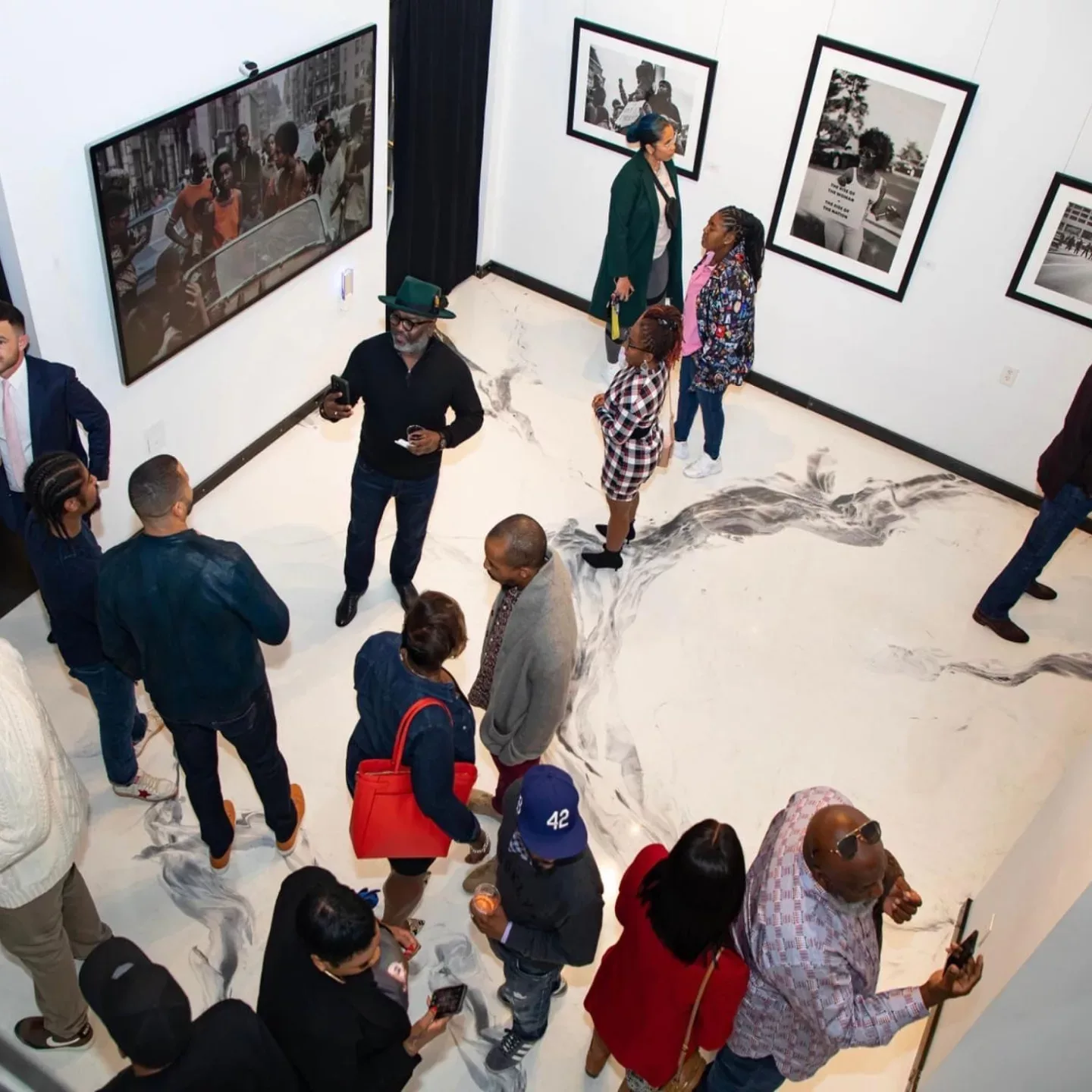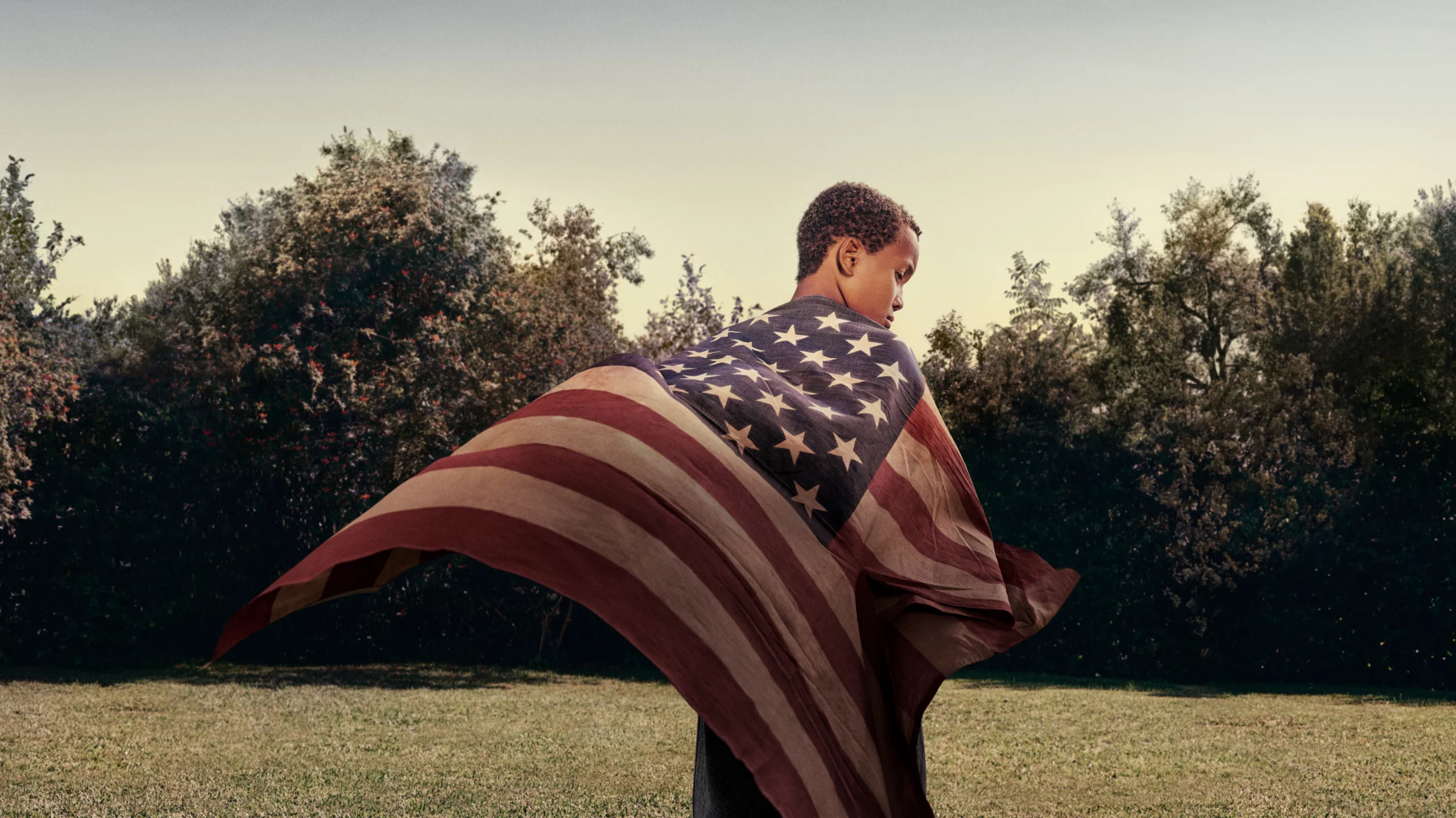The Art Brothers represent

The owners of ZuCot Gallery—Troy Taylor and brothers Onaje and Omari Henderson, want everyone to feel confident about collecting fine art. As the largest Black-owned gallery in the southeast, ZuCot welcomes you to explore their collection in a positive, uplifting space.
When you enter ZuCot Gallery, you’re immediately greeted with warmth and enthusiasm. The owners and staff purposely dress more casually and play feel-good melodic music. Fela Kuti, Robert Glasper, and WizKid are a few of their favorites. They’re delighted to walk around with you, or you can scan the QR codes next to each painting. Connecting with the artist to understand the narrative is part of the immersive experience ZuCot wants you to enjoy.
“There’s a value to art that’s intrinsic and that means something to a person. For instance, if I had a painting right now of my great-grandfather that had been passed down, the intrinsic value would be astonishing. This is why art is important to families and it’s priceless for that very reason. I think we have to be aware and recognize those things when they happen,” says Onaje Henderson.
ZuCot Gallery believes purchasing art shouldn’t be intimidating, but deeply spiritual. Aside from making fine art more accessible, their goal is to expand the reach of Black and African-American art in the US and the world. Many people are surprised by how many Black and African-American artists there are, simply because they’re underrepresented. ZuCot is changing this.
Growing up, you recognize your absence in public spaces. You don’t see images of yourself anywhere. What we see is what becomes true.
Premier Art grows with artist representation
Onaje and Omari Henderson grew up around art. Their father, Aaron F. Henderson, left his career as an electrical engineer to pursue his dream of being a full-time artist. After his sons finished school, he established the company, Premier Art, as a way to promote and sell his work. Onaje pursued a career in mechanical engineering, Omari chemical engineering. However, the brothers eventually realized art was their passion. They left their lucrative jobs and returned to Atlanta to manage their father’s successful business.
Onaje and Omari took over Premier Art and began representing other African-American artists, rented gallery space for pop-up exhibitions, and connected with the local art scene. They launched Art Tasting, an event that removes the intimidation of buying art by educating anyone who wants to become a collector. They discovered this was a great way to grow the business, especially when they started hosting corporate events. Their first client was Coca-Cola, one of the largest global corporations based in Atlanta.
“At some point, the Art Tasting had grown and we began to look at the Art Tastings and say, OK, if we can change the mindsets of young people, why not corporations? And so we started going after them. It’s funny, when we initially started the Art Tasting, we were just going to contact small businesses around the city,” says Onaje.
Aaron F. Henderson
The artist provides a rich narrative of emotion and character in each of his works.
The name of the gallery (ZuCot) is a tribute to the pioneers and giants whose shoulders we stand on.
ZuCot Gallery meets Premier Art
Troy Taylor discovered his passion for collecting fine art on his business travels. After encouragement from artists who knew him, he left his career as a VP at Johnson & Johnson to open ZuCot Gallery in Atlanta. He named the space after his grandmother, Frances Ann Taylor, one of the first women allowed to own a stall at a produce market on the British colony of St. Kitts. She was known to be “as tough as a zoo cat” by the locals who loved her. After she migrated to America, her family softened her nickname to ZuCot.
Troy met Onaje and Omari at an Art Tasting and was impressed with their shared love for art. He suggested they do a show together for Black History Month, which they thought was a great idea. Troy mentioned to the brothers that in life, many want to do well, but it’s more important to do good. Then he suggested they do good together.
They quickly formed a partnership because they were so much alike. Troy brought a different business approach, making them really ask why things were a certain way in the art world. They realized they were disruptors who needed to enact change by creating a positive space, and connecting with the community as a Black-owned business.

The three men became known locally as “The Art Brothers”, representing living Black and African-American fine artists. They noticed that many successful galleries copied a formula that excludes most people, especially Black and African-American people. They wanted to create an unapologetically Black space—to see, hear, and tell stories.
“It’s respected in this space, and I think that’s the beauty of it. I think it’s so important that we have these spaces, and it’s not just for other Black people to see, but it’s for everyone to see. This is a space where you can come in and just learn about someone else’s perspective,” says Onaje.



As we continue to create ways to engage with young people, technology helps break the barrier of a ‘boring’ art gallery and entices them to want to learn more about art and entrepreneurship.
ZuCot disrupts with technology
ZuCot understands the value of being early adopters of tech. From virtual exhibits to their new app that shows how a painting will look in your home, Microsoft is helping expand their reach. The Gift is their current exhibit that’s honoring the roots of hip-hop and its global influence. As the third virtual gallery powered by Microsoft’s Azure technology, The Gift can be viewed in an online gallery and in person. The virtual exhibit allows visitors to view the artwork while streaming a playlist that inspired the artists.
“Hip hop’s influence is undeniable—from fighting to be heard to now being the voice of generations. This exhibition pays homage while also looking ahead to its continued evolution and prominence,” says Onaje Henderson, ZuCot co-owner and exhibition curator. “Every artist and piece selected represents a different perspective of hip-hop’s impact on not only society but in the lives of individuals. For many, hip-hop is more than just a genre. It’s more than a ‘dope beat’ or a ‘sick 16.’ It’s an expression of freedom, rebellion, optimism, kinship, strength, resilience, joy, progress.”
Featured artists include Petie Parker, Horace Imhotep, Charlotte Riley-Webb, Alfred Conteh, Michi Meko, Maurice Evans, Nathan Addley, Michael Reese, Charly Palmer, D.L Warfield, and Paper Frank.
“Hip-hop is not just the music, it’s not just the fashion, not the traditional elements of it,” says multidisciplinary artist Alfred Conteh. “Hip hop is people’s lives and realities – that’s what gets reflected in music. Outside of the sneakers and what’s playing through the system is extracted from what people do from dawn to dusk, and that’s what I capture in my work.”
The Gift also reinforces ZuCot’s passion for educating communities about the importance of celebrating African American culture by owning a piece of original art from living Black artists.
Experience The Gift, ZuCot Gallery





